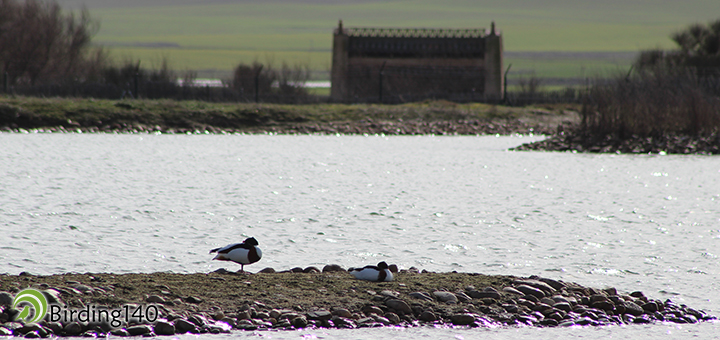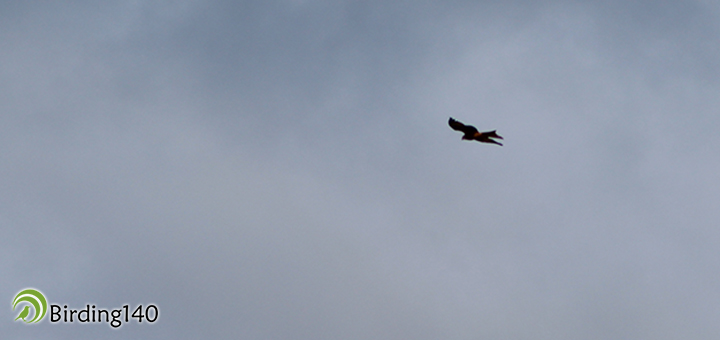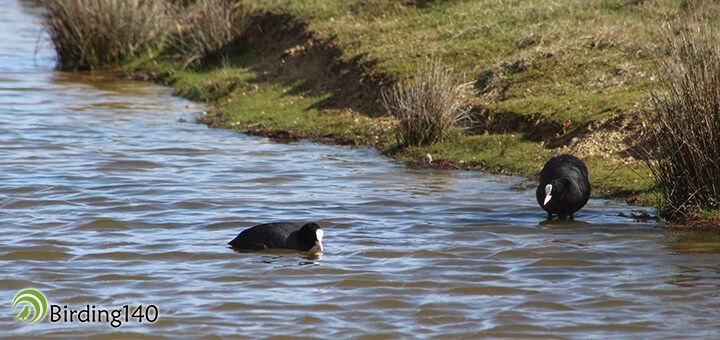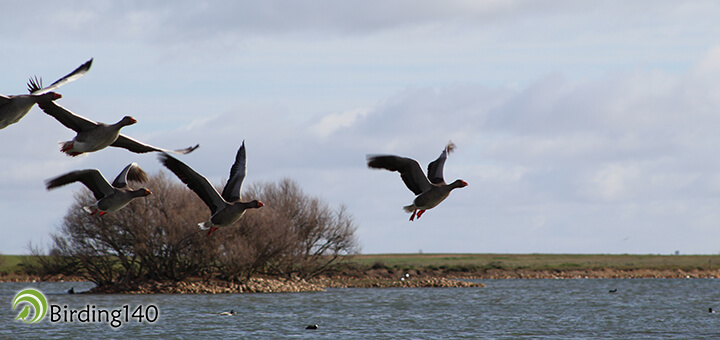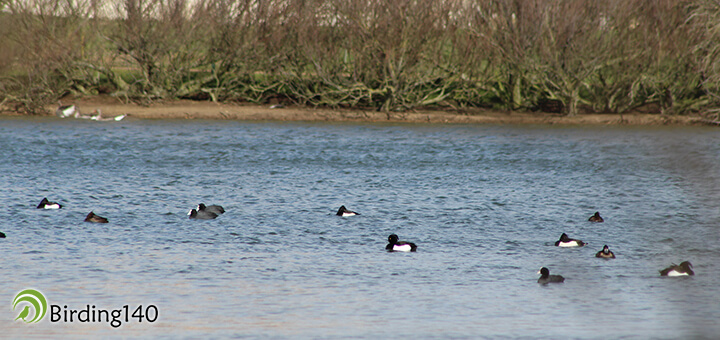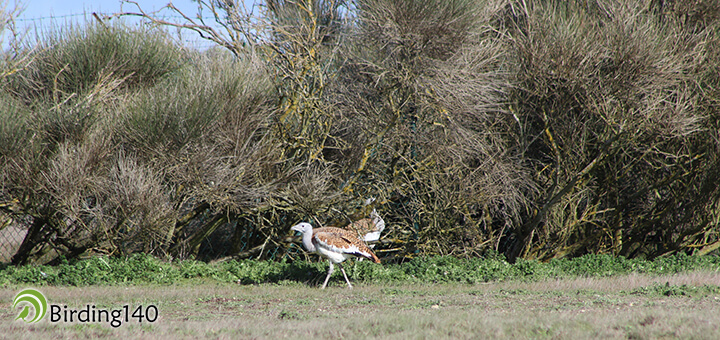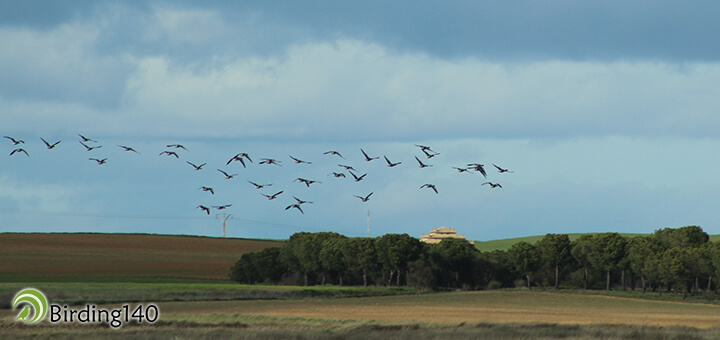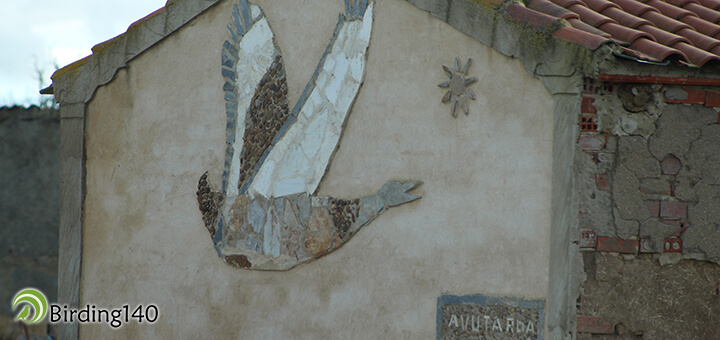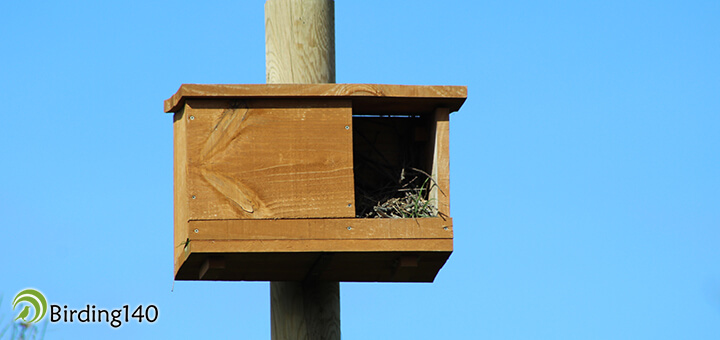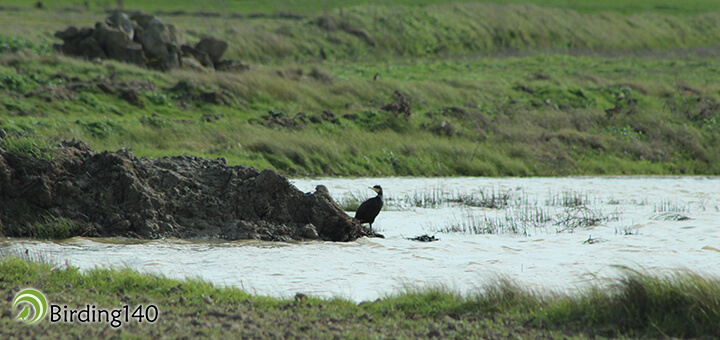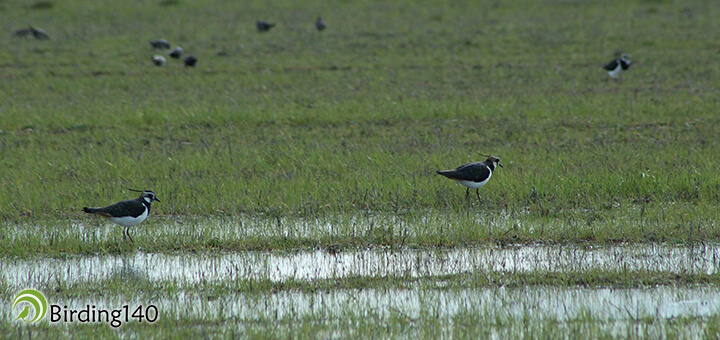On the occasion of the World Wetlands Day we came to this space with new dreams, knowing that the much expected rains of this atypical winter had momentarily increased the volume of these salt lakes.
After leaving the A-6 highway and entering protected land, we already found the crops adjacent to the road spotted with ponds and lagoons. All this preceded the great diversity of species that we would discover later in our visit.
The original idea was to enjoy the flights of the Greylag Geese, which on these dates start their migration to their headquarters in the Nordic Countries, as well as the arrival of the White Storks and the start of their nuptial flight.
We covered the section between Tapioles to the Lake of Barillos without any relevant sighting. At both sides of the road our eyes were delighted by the first green fluorescent sprouts, which emerged from the ground after the first significant rainfall of the year.
We arrived to the Lake of Barillos with the cold air refreshing our faces. It was really impressive to see the change that the water had produced in this lake from our last visit in autumn. The volume of the water had scattered the usual conglomeration of birds.
An unmistakable male Northern Shoveler was wading with great difficulty against the wind. Meanwhile, on the other side two male Common Shelducks were observing him while they made their best to bear the gusts of winds from the shore.
When we returned to the road, the sun was in its maximum splendour, relieving the cold produced by the air, which gave us an unusually long truce when we arrived to the Interpretation Centre.
Before entering the parking area of the Interpretation Centre we were surprised by two Red Kites in flight which disappeared behind one of the many dovecotes of these lands. Their low flight took them to the other side of the road until they hit land and mingled close to a White Stork that was looking for food in the waterlogged crops.
The friendly staff of the Centre informed us about the sighting possibilities within our reach at the moment in the lakes and adjacent observatories. In the first observatories of the Centre we could enjoy the peaceful Mallards and the dips of the nervous coots, which didn’t stop diving looking for food. It was really impressive to see the amount of these Rallidae which occasionally bunched up on the shores awaiting their turn to dive. However, the creation of the artificial lakes of the Interpretation Centre has favoured them, since it has offered them the sustenance and shelter they need.
The show was guaranteed when several flocks of Greylag Gooses arrived and left the lakes. They looked uneasy. They were preparing the muscles of their huge wings to shortly start their return trip to the lands where they were born. Their potent flight made them rise in the air without difficulty, gaining momentum in such a way that, with each beat, their wings produced a characteristic sound that made the observer shudder.
In a recent study carried out by Mariano Rodríguez, director of the Reserve of the Lakes of Villafáfila, it was confirmed the decrease in number of the specimens arriving, mainly due to climate change. It seems that “the feet”, as they are known by the local people of Zamora, don’t arrive to these lands in the same amounts as they used to many years ago. Nowadays, Holland is their key place for wintering. This land has grown from a small wintering population to over 400,000 Greylag Gooses which chose to come this winter. If the current trend persists, the show of the arrival and departure of these birds to the Reserve can become something symbolic.
In other observatory, among the many coots, two male Tufted Ducks stood out. This sighting was a gift, without a doubt, because those just appear in the Reserve from time to time. They are unmistakable due to the feathers that stand out from their heads and give them their name, and due to their yellow eyes which shine against their dark plumage.
In the bustard observatory we were delighted by the comings and goings of three specimens of these steppe giants, which couldn’t take advantage of their cryptic plumage. The greenery of the brooms unveiled the magnificence of their uncovered bodies. The passiveness of their parade before our careful eyes was really impressive. However, they are easy to sight in the reserve, and during our numerous visits to this space we have confirmed the grade of acceptance of humans in it. We don’t get tired of seeing them.
After leaving the observatory of the great steppe birds, two specimens of the everlasting White Stork surpassed us in a low flight. These birds are enormous in flight. Their slow wing beats and their stretched neck give them a unique character when they soar the skies. The years when these wading birds reduced their numbers to alarming limits are left behind.
We climbed to the last observatory, with the shape of a tower. In a cavity of the observatory, as we were going up, we were surprised by the improvised cemetery of old posters which had been accumulating there from other times. From above we could enjoy again the powerful flight of a flock of Mallards, which crossed the sky to arrive close to some male Common Pochards and Mallards.
We set out again in order to arrive to Villafáfila. At the entrance of the village we were surprised by the facade of one of the houses. One of the neighbours had decided that he could pay tribute to the queen of the steppe birds in flight if he placed some stones in a convenient way. Under the artwork is the word “Bustard”, to make clear which bird it is.
In front of the facade, a huge dovecote showed us the sighting possibilities, apart from domestic pigeons, offered by these mud and straw buildings. But that is another story to tell in a different occasion. Meanwhile, in a pasture nearby, a couple of storks speared the thin grass with their beaks, looking for batrachians to support themselves.
After a stop to rest in one of the village’s taverns, we crossed it and set way to Otero de Sariegos. To arrive to this abandoned village, there is a road full of old light poles, reconverted into improvised perches and nest boxes for birds of prey.
We were surprised by the grade of flooding in the crops on both sides of the road. At the entrance of the village, in one of the adjacent ponds, a known figure shaped its characteristic black silhouette. It was the Great Cormorant. We were lucky to see it, because in the surroundings of the lakes it only appears occasionally in winter.
After covering the path that leads to the Lake of Salina Grande, we arrived to the observatory, leaving behind a melancholic landscape of the ruined dovecotes. From there, we could observe a group of Northern Shovelers supporting the dance offered by the waves produced by the increasing wind. The growing gale, together with the decrease in temperatures after the sunset, set us towards our return trip.
But the return had some surprises awaiting us. The less flooded crop fields were full of lapwings which were holding on as their plumes revolted from one side to the other. As we were moving forward, we found more numerous groups of these birds, to the point where the crops seemed completely dotted with them. However, February is the most abundant month for lapwings in this area. Moreover, this is one of the most important places in Europe for them to set their nests.
With no time left, the sun was exhausting its lasts beats, while some distant flocks of Mallards arrived to the lakes of this area which doesn’t cease to surprise us. We hope we can keep enjoying this kind of shows for a long time. We also wish that enclaves of this kind don’t cease to offer us their diversity due to the scourges caused by climate chang

